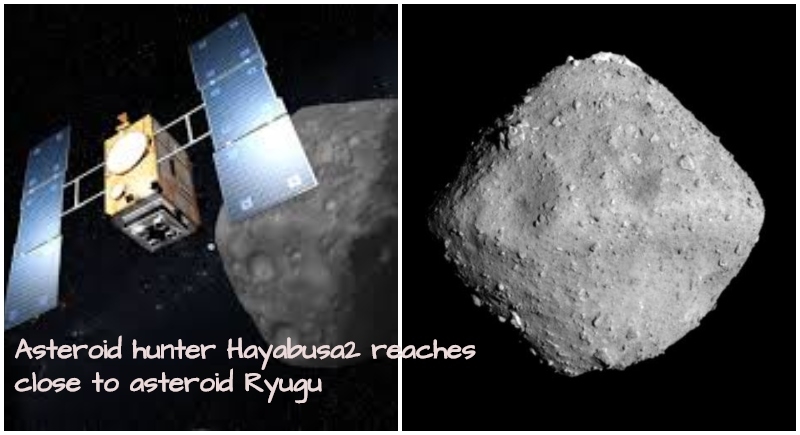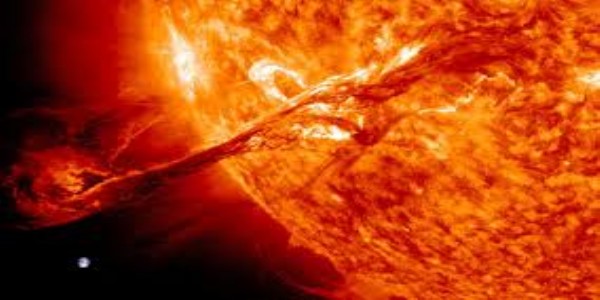Asteroid hunter Hayabusa2 reaches to asteroid Ryugu; watches it from a distance of around 40km
Total Views | 10
Deep Space, June 29: 1302 days after the launch from Tanegashima Space Center on December 3, 2014, Hayabusa2, the asteroid hunter sent into the deep space in 2014 by Japan, has finally arrived at the target asteroid Ryugu. The arrival time was 9:35 am JST on June 27, 2018. Japanese space agency JAXA conveys that the Hayabusa2 can begin to fully explore Ryugu. Hayabusa2 is close to arriving at asteroid Ryugu. "After a journey of around 3.2 billion km since launch, our destination is finally near. Two small objects will soon meet in outer space 280 million km from the Earth", tell the JAXA.

After the end of the ion engine operations on June 3, 2018, Hayabusa2 began the final asteroid approach phase. Optical navigation was used to precisely aim for the asteroid's location. During the approach, the chemical propulsion thrusters were used to perform nine Trajectory Correction Maneuvers (TCM) to control the velocity of the spacecraft, with a tenth TCM made at the above time for arrival. After the final TCM10, the relative speed between Hayabusa2 and Ryugu was 1 cm/s or less and arrival at the asteroid was declared.
JAXA confirmed Hayabusa2, JAXA's asteroid explorer rendezvoused with Ryugu, the target asteroid. On June 27, 2018, JAXA operated Hayabusa2 chemical propulsion thrusters for the spacecraft's orbit control. The confirmation of the Hayabusa2 rendezvous made at 9:35 a.m. (Japan Standard Time, JST) is based on the following data analyses;
・The thruster operation of Hayabusa2 occurred nominally
・The distance between Hayabusa2 and Ryugu is approximately 20 kilometres
・Hayabusa2 is able to maintain a constant distance to asteroid Ryugu
・The status of Hayabusa2 is normal
The space engineers at JAXA are planning to conduct exploratory activities in the vicinity of the asteroid, including scientific observation of asteroid Ryugu and surveying the asteroid for sample collection.
Now at a distance of about 20 km, the environment of Ryugu is clearly visible. The image shared is of Ryugu captured by the ONC-T (Optical Navigation Camera - Telescopic) on June 26, the day before arrival. The shape of Ruyugu is like that of an abacus bead, with large and small craters and many boulders.
From now on, Hayabusa2 will stay near Ryugu, observe the asteroid, release the lander and rovers, touch down and perform the impact experiment. Since these mission operations differ considerably from the activities prior to arrival, we created a new mission logo for Hayabusa2, tells JAXA.





